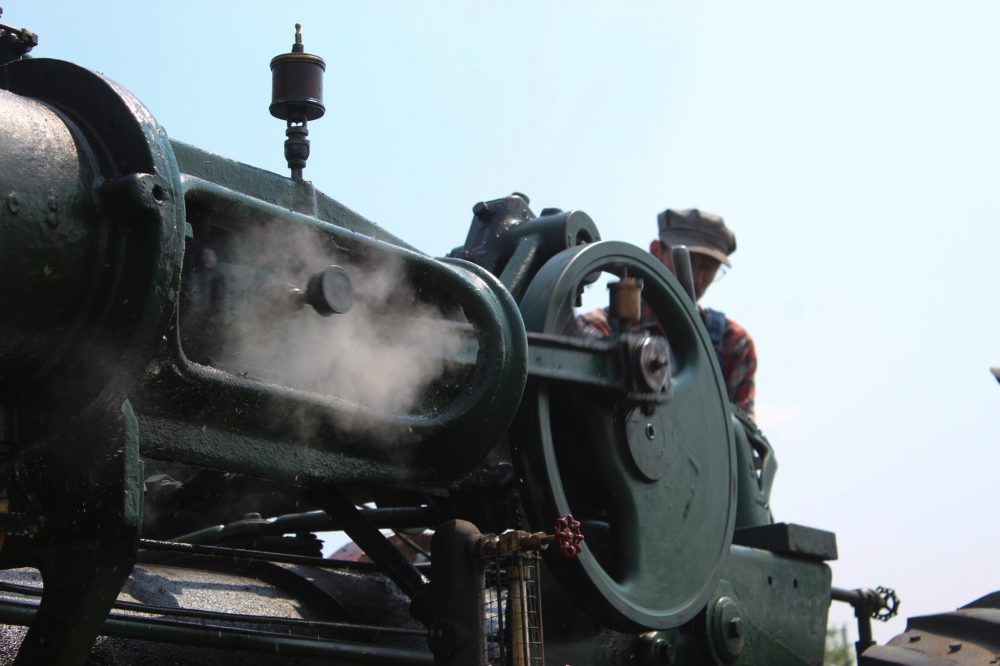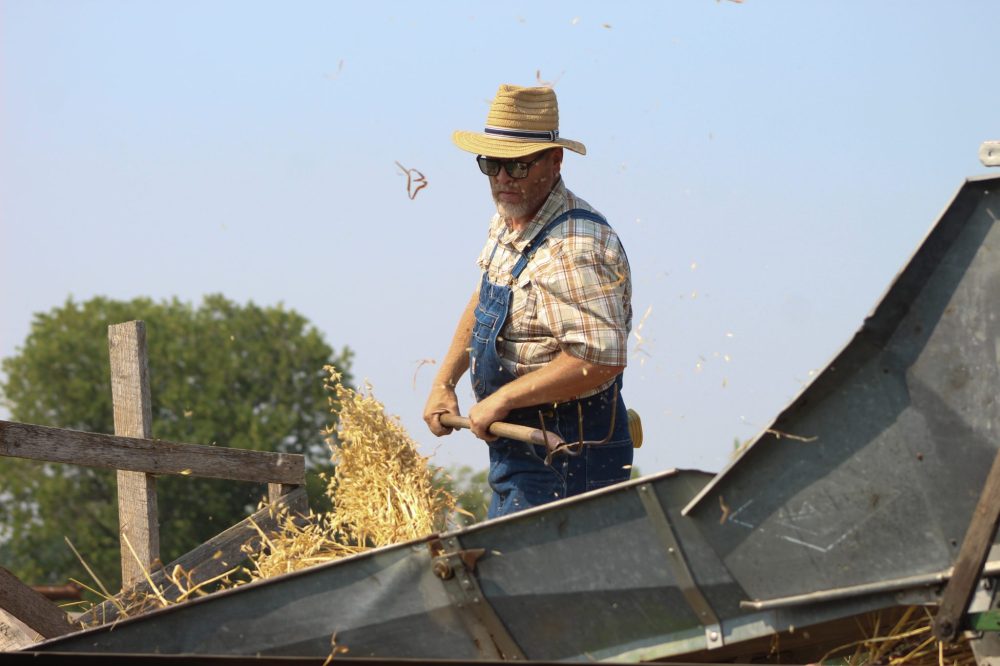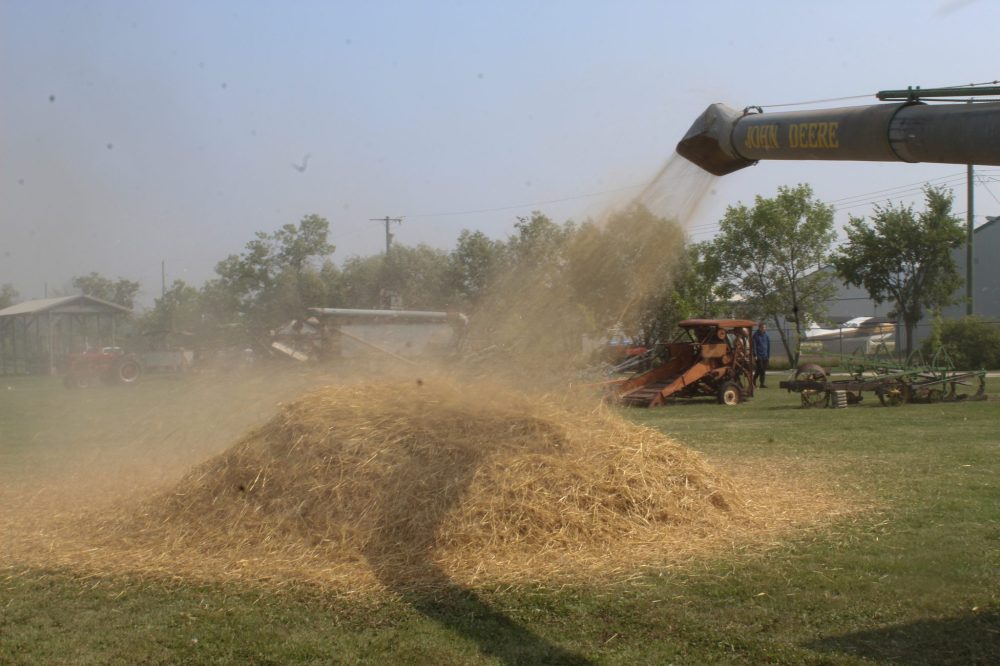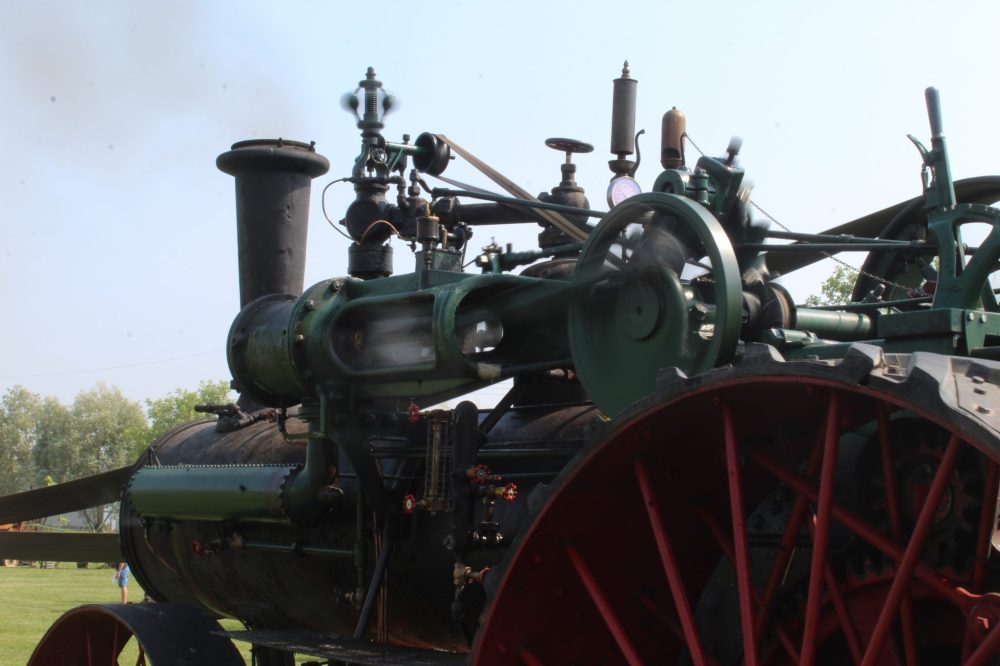Tapping into the power of the past with steam
Advertisement
For Dylan Peters, operating a steam engine is more than driving a machine – it’s a whole-body experience.
When the engine is in full swing, it can be felt in your bones, he said.
“You can smell the heat coming off of it. You can smell the steam, the oil. It just smells powerful,” Peters said.
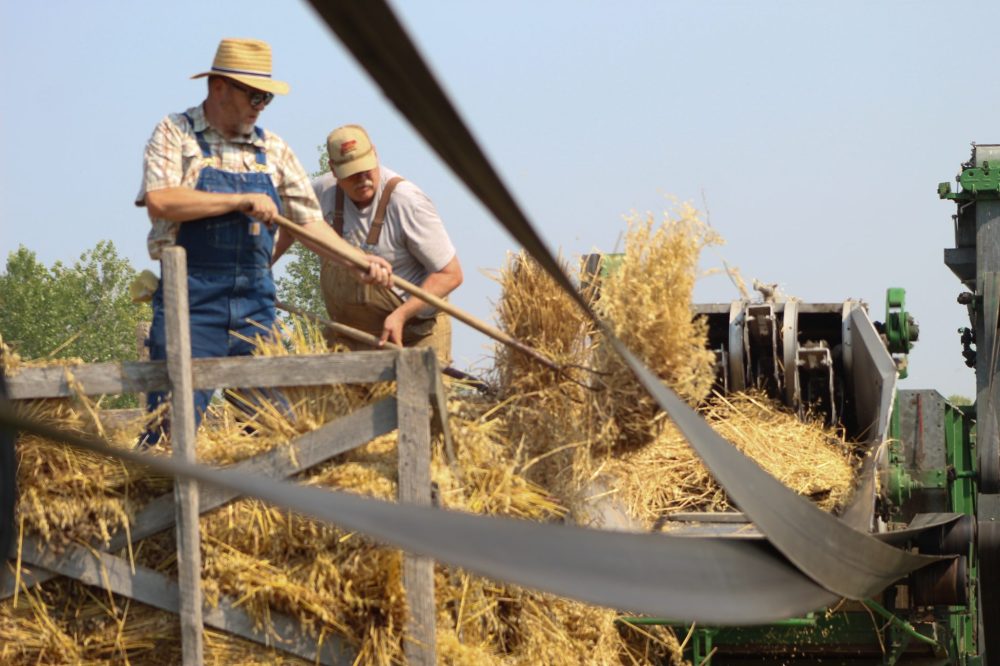
Peters is part of a group of steam enthusiasts who put on a full demonstration of the Mennonite Heritage Village’s steam engine on Saturday, as part of Pioneer Days.
The engine roves around the museum grounds, powering both the sawmill and the threshing machine. It only runs three times a year.
It’s hard to ignore its piercing whistle. One ear-thumping scream from the 113-year-old Case steam engine’s whistle means it reached its max for pent-up steam. Two in a row alert everyone its wheels and belts are moving.
Peters’ love for steam engines sparked when he was 12 years old after spending time with his grandfather, who restored old tractors. When the opportunity to hop on a larger, noisier machine came up, it immediately hooked him.
Now 25, he’s been coming back to the museum ever since, making the trek from Winnipeg to keep his love for steam engines rolling. The historical significance of the engine has pushed him to pursue getting provincially certified in running the machine.
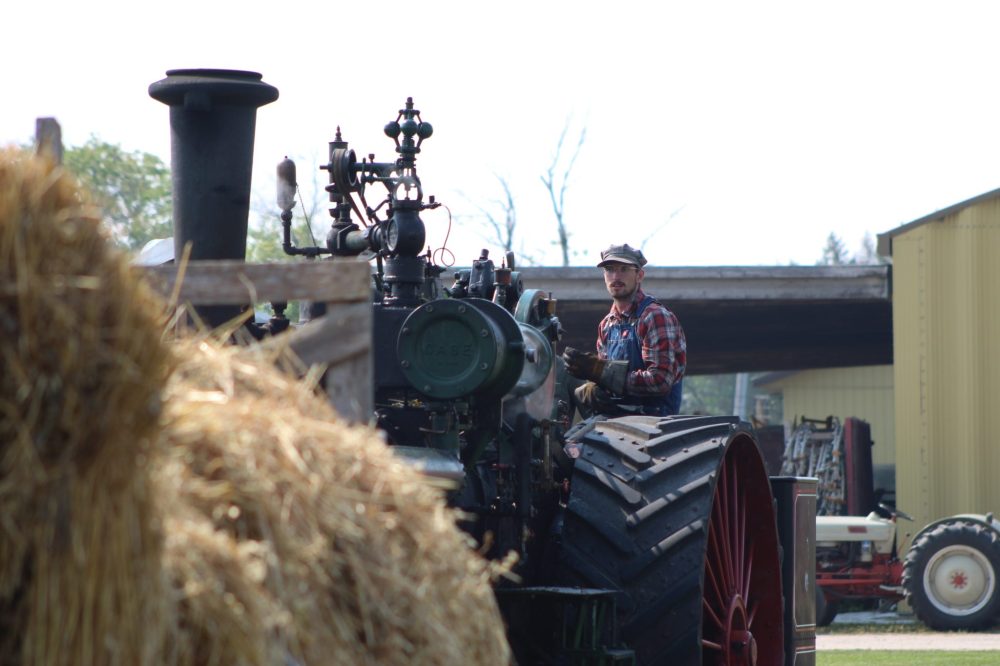
“There’s definitely not a lot of people who understand even a little garden tractor, never mind something like this. It’s something that’s being lost,” Peters said while pitching logs into the engine’s hungry furnace.
“It’s not all fancy electric cars. We’ve come from steam engines that are dirty. You have to put in a lot of effort.”
Steam engines are provincial regulated vehicles in Manitoba, through the labour and immigration department, which classifies them as a “Historical Steam Traction Boiler.”
To get behind the wheels and levers of a steam engine, people must pass written exams, gather 120 hours of experience operating an engine and complete a driving test.
Peters has all of his mandatory hours completed and hopes to take the driving test in the fall to become fully certified.
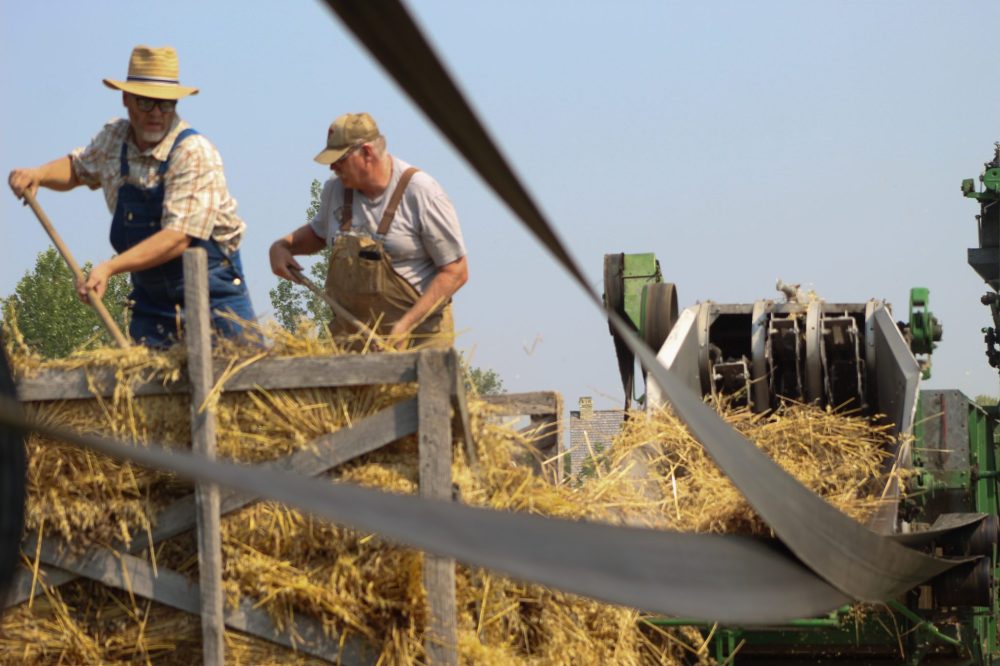
The hardest part about operating the steam engine is how to maintain it because everything is done visually, Peters said. There’s no flashing lights or beeping alarms if an issue pops up.
Peters wishes he could run the steam engine more often, but he often only has a couple chances each year because there’s not many in Manitoba.
“It’s not like learning to drive a car where you can go out every weekend with your parents and learn how to drive it. This is an once or twice-a-year thing, and that’s that,” Peters said after he noticed some extra steam needed to be released from the boiler.
With a lurch, the lumbering engine inches close enough to wrap the belt around both the threshing machine’s wheel and its own. Beside the waiting pile of grain stands Peters’ father, Conrad, helping guide the engine.
Conrad, a Winnipeg school teacher by trade, gives a thumbs up to his son perched on the platform once the two machines are connected.
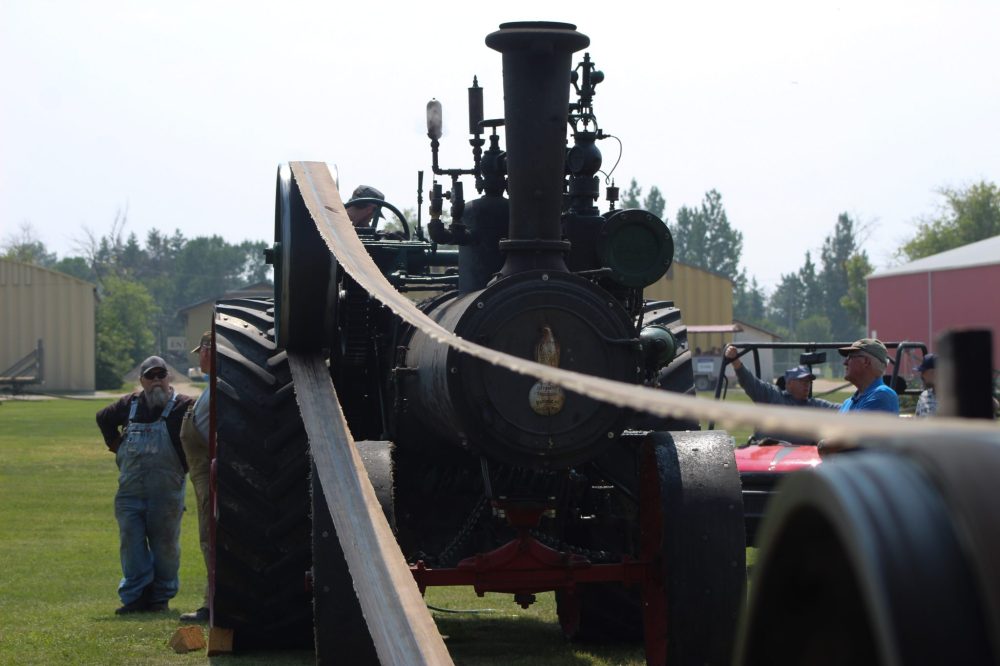
“I’m just proud he’s taken an interest in history. It’s not always a popular thing to do,” he said.
Conrad followed his son into the hobby when he watched him fall in love with steam engines. While Conrad didn’t have any experience with those machines, he looked for a way to do something together with his son.
When he first arrived to see the engine, the 59-year-old was put to work helping operate the threshing machine and pitching hay into its churning teeth.
Whenever he stands beside the engine, Conrad said he can feel its heartbeat.
“You can close your eyes, and it’s just something that’s alive,” he said. “Each engine has its own sound and its own rhythm.”
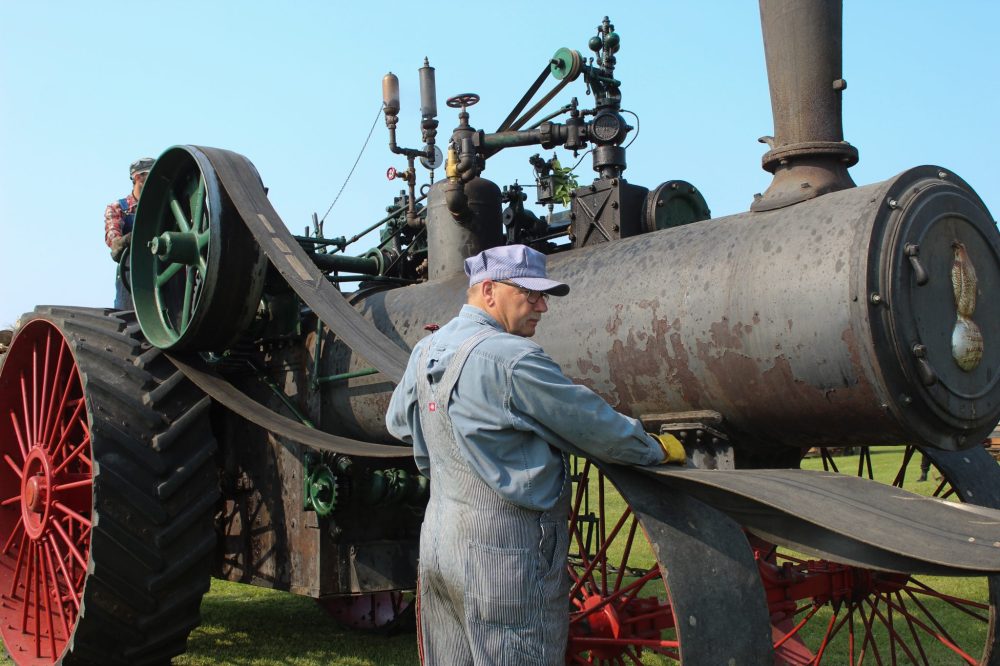
He’s still amazed watching the threshing machine every time it runs. The fact that it’s a belt on a main pulley where the main source of power comes from shows the ingenuity from people at the time, he said.
“There’s no separate motor, no hydraulic hoses. That just blows me away,” he said.
Bob Giesbrecht, 69, stands behind the tractor as Dylan Peters rolls the mass of steel and iron to the waiting threshing machine.
While the engine sits at the ready, a rush of white-hot steam bursts from one of the valves.
“The engine is a little excited right now. It wants to get to work,” said Giesbrecht.

When the steam pressure reaches its maximum level, it “blows its top” to let that pressure loose, he said.
With a chug, clank and hiss, the engine is finally let loose to power the threshing machine’s teeth as it chews through the bushels of grain thrown into it.
The whirring of metal and steam of the engine settles into a low rumbling hum as the threshing machine separates the grain from the chaff.
Giesbrecht would usually be on the platform, stoking the engine’s fire or massaging its throttle. But not on Saturday. Instead, he stepped back to let younger people learn the ropes — or in this case levers. That’s how he was taught.
“It’s a bit of a learning game. You learn as you go,” he said, while keeping a watchful eye on the crew as they tensioned the belts.
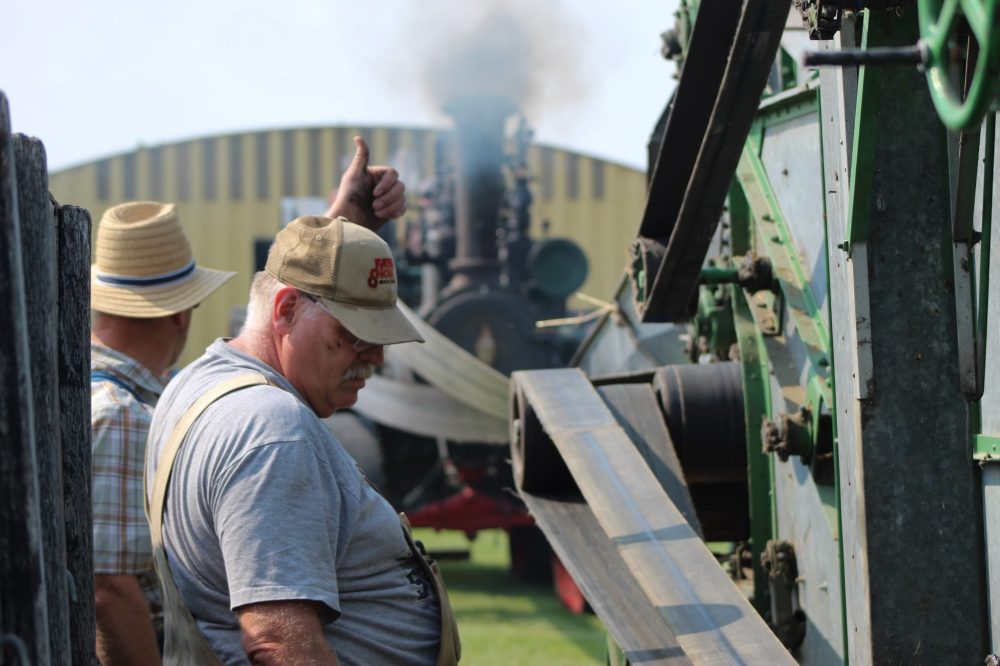
“The (more experienced) guys will just give you little bits and pieces.”
His father was one of 12 Steinbach men who purchased the engine in 1971 for the Mennonite Heritage Village’s steam collection. Giesbrecht was 16 at the time and remembers the day it was delivered.
Since he was the smallest out of the group, Giesbrecht was tasked with the grimy job of crawling into the belly of the engine’s boiler and scrubbing it clean. He never thought he’d be the operator of it.
Now, Giesbrecht is the only surviving member of that core group when the engine arrived.
After being one of two main operators, he wants to leave some of the harder work for those who have more energy. While there was a honeymoon period at first when he started operating it, it quickly wore off when the real work set in.

“I’m going to be 70 years old in three months. I’m getting older, and I can feel it,” Giesbrecht said.
“In a day’s run, you’ve put through a cord of wood, and it all has to be fired into that hole. Somebody’s got to do it to keep it going.”
Giesbrecht said their engine must be provincially inspected and certified every year to run. The engine is run three times a year, and it takes two hours of prep work before it’s ready to work.
He believes running the steam engine is history “in its purest form.”
“This was the first step after horses. So, this is the first crack at power that people had,” Giesbrecht said.
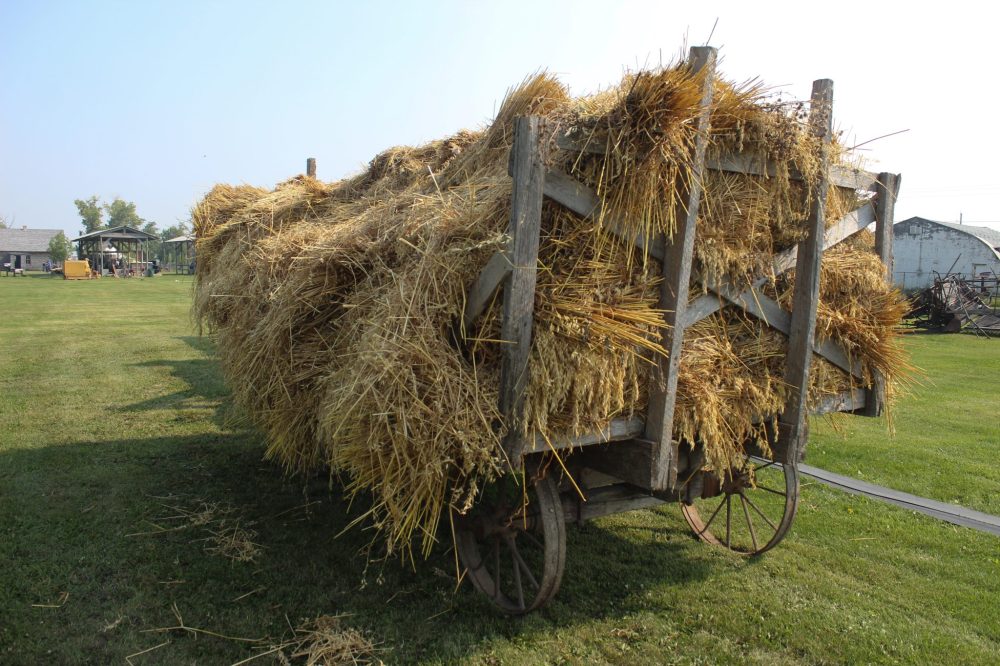
Having the steam engine, threshing machine and sawmill helps tell the story of the first years when Mennonites arrived in Manitoba in the 1870s, said Robert Goertzen, executive director for Mennonite Heritage Village.
“Knowing where the community came from is really important in setting a good foundation for understanding how we’ve developed as a local community,” he said.
Keeping the machinery running and maintaining those traditions is necessary because it can explain why things are done a certain way now, Goertzen said. Without that, people can lose perspective if they only focus on the present and future, he added.
He’s encouraged when the younger generation show interests in continuing the legacy of those traditions because many of those skills aren’t commonly known.
“There are all sorts of work and home-related activities that for many of us are either a memory or something from a story book,” Goertzen said. “This is a wonderful way to make those experiences live.”
